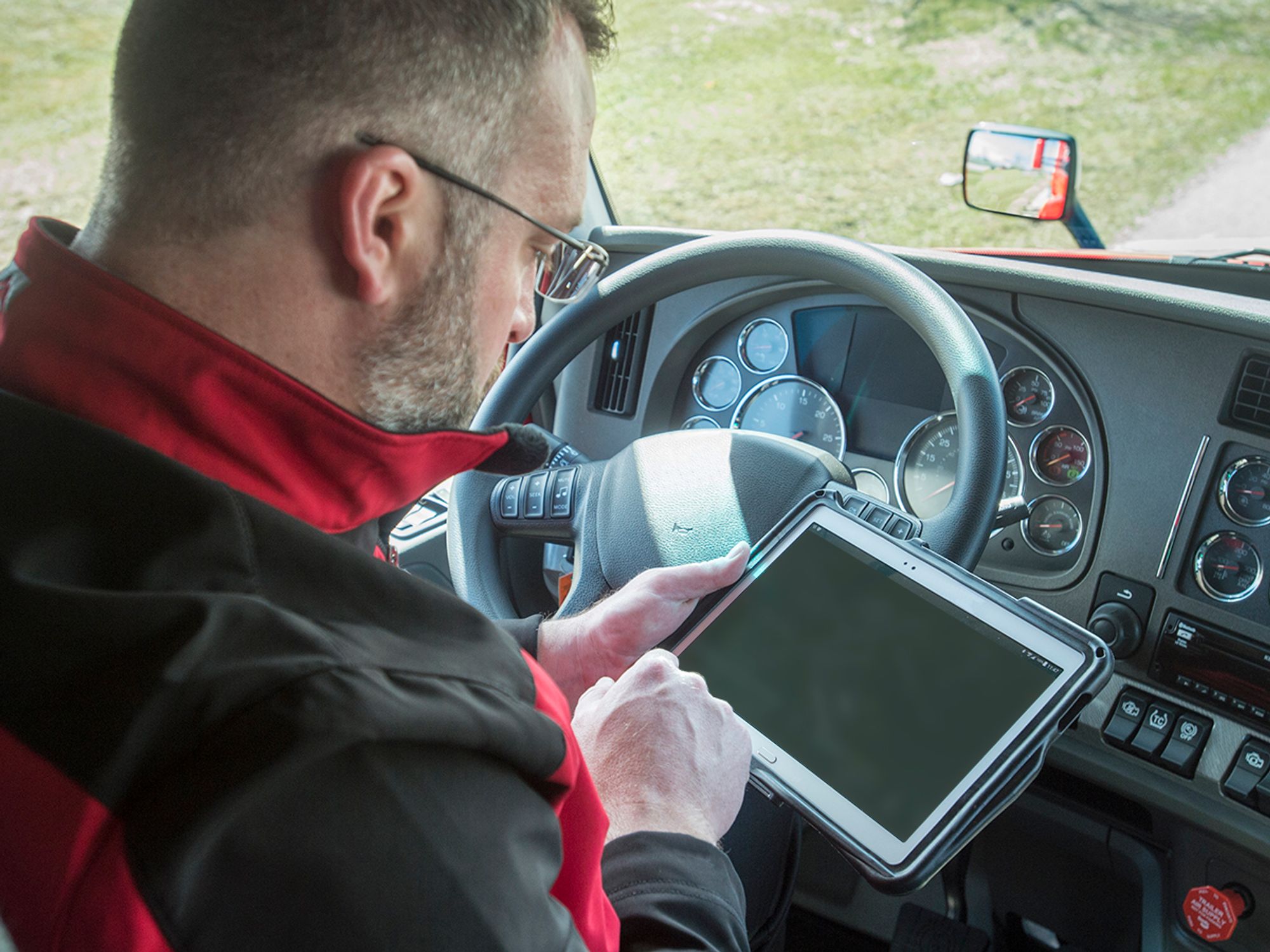Idle reduction hardware and software

- Idle reduction hardware systems can control the temperature inside the cab without using extra fuel.
- Software systems reduce idling with mechanism to shut-off the engine after a certain amount of time.
Hardware
The next method would be idle reduction hardware, such as an auxiliary power unit (APU) to heat and/or cool the cab without running the main engine. The diesel-powered APUs that are presently available can heat or cool the vehicle for a complete driver rest cycle using less than one-half of a gallon of fuel (as compared to three-fourths to one gallon of fuel per hour of idling in heavy-duty vehicles).
Idle reduction hardware that can be installed on the vehicles includes:
- Phase charging systems that can cool the vehicle for up to eight hours without running the vehicle engine,
- “Shore line” systems that use 120-volt power from an outside source to heat and/or cool the cab while the vehicle is parked,
- Generators (gensets) that provide 120-volt or 12-volt power to the cab to operate heating and cooling systems,
- Heating and cooling “tubes” that connect to the cab,
- 12-volt heating and/or cooling systems that use extra battery packs, and
- Diesel cab heaters.
Several of these hardware systems use no fuel. Of course, there is the initial cost of the idle reduction equipment and the cost of installation, but this can be offset by the fuel savings, federal tax breaks, and other program involvement. One such program is the Environmental Protection Agency’s (EPA) “Smartway Transportation Partnership” program. This program provides low interest loans and grants to carriers who are willing to reduce emissions through the reduction of fuel usage.
There are also potential problems with heat generation, driver acceptance, and equipment compatibility that need to be addressed with these hardware systems. As with any other cost reduction plan, the carrier will need to study the costs and benefits of installing the idle reduction hardware.
Software
Installation of idle reduction software is another high-tech solution to idling. The fuel management computer on most modern medium- and heavy-duty vehicles can be programmed to shut down the main engine after a predetermined number of minutes of idling. There are software systems (some requiring hardware upgrades) that will automatically shut down and start up the main engine to warm or cool the cab of a sleeper truck based on the driver’s desired cab temperature. This allows for fuel savings by not running the engine when the driver does not need heat or air conditioning.
The starting point for any of these initiatives is the development and strict enforcement of a no-idle policy (if not sleeping in the cab, the truck is not to be running). To verify compliance with such a policy, the carrier may need to use (or install) onboard hardware and/or software to track driver performance. Typically, the maintenance manager becomes involved in these programs due to the increase in vehicle maintenance or improvements that are required. Also, vehicle maintenance checklists may need to be modified to include routine downloads of onboard computers.
The key is to equip the vehicle and motivate the driver to reduce idle; one cannot be done without the other. Simply telling drivers to reduce idle may not lead to any reduction if the drivers are already at the minimum, but providing the vehicle with hardware or software may assist the driver in lowering the idle time.
